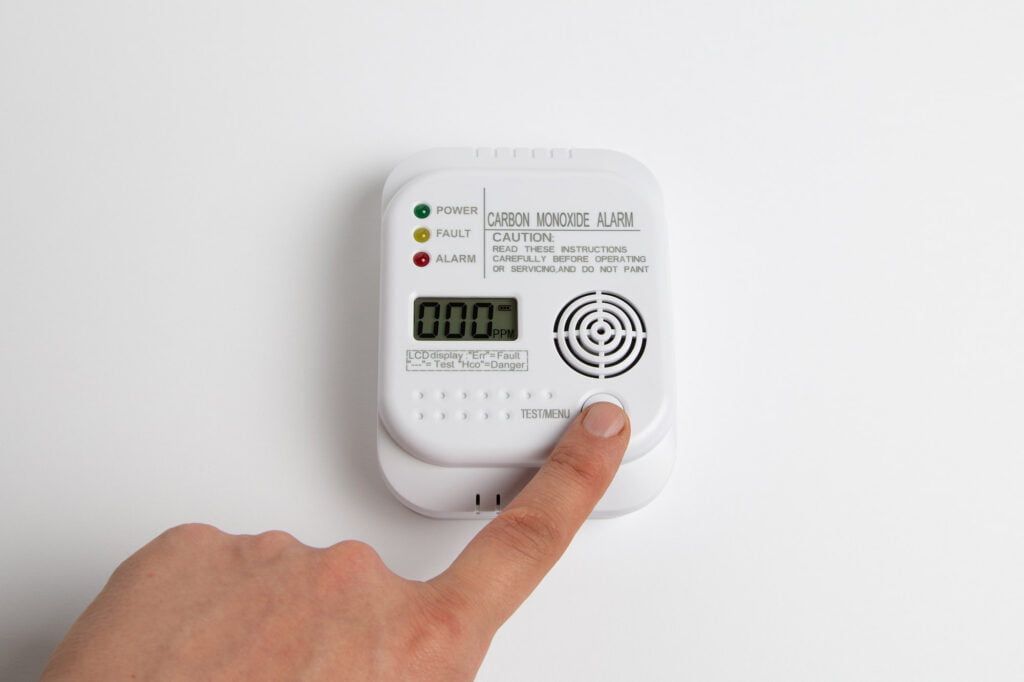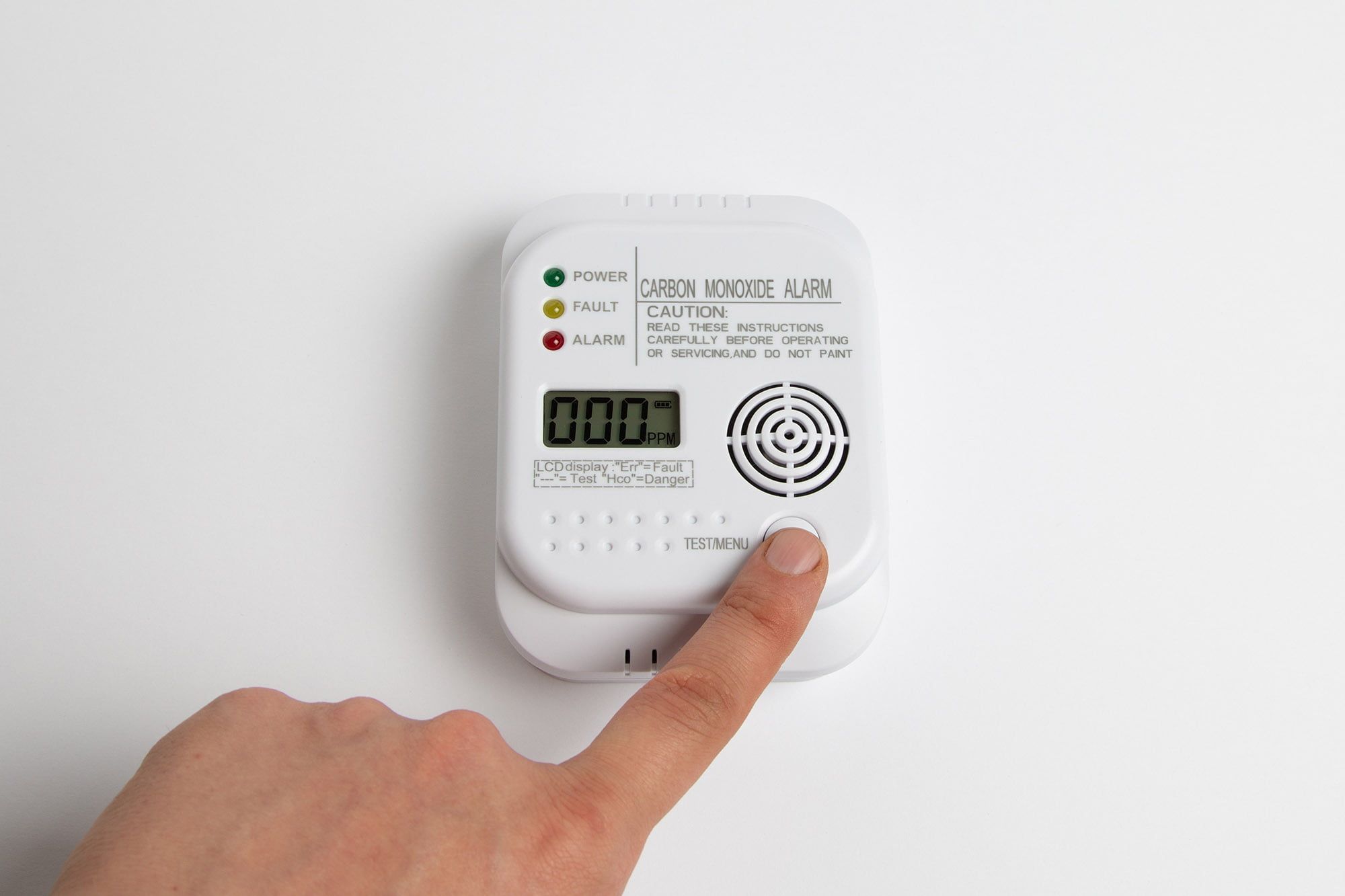Carbon monoxide (CO), an odorless, colorless, and tasteless gas, poses a silent yet deadly threat to the safety and well-being of individuals and families within their own homes.
So what is carbon monoxide? Produced by the incomplete combustion of carbon-based fuels, such as gasoline, natural gas, wood, and coal, this toxic gas can accumulate in residential spaces without noticeable signs, leading to serious health issues and even death. Given its potential to cause significant harm, homeowners and renters need to be well-informed about the dangers of carbon monoxide and the steps they can take to protect themselves and their loved ones.
Why is Carbon Monoxide Dangerous?
The danger of CO lies in its stealth. Since we can’t see or smell it, we might not know it’s in our homes until it’s too late. When we breathe in carbon monoxide, it binds to our red blood cells instead of oxygen. This deprives our body of the oxygen it needs to function, leading to serious health problems or even death.
How is Carbon Monoxide Produced?
Carbon monoxide is produced through the incomplete combustion of carbon-containing fuels, such as gasoline, natural gas, propane, wood, and coal. This incomplete combustion can occur in various household appliances and engines, including furnaces, water heaters, fireplaces, stoves, and car engines, especially when improperly maintained or adequately ventilated.

What Causes Carbon Monoxide in a House?
The incomplete combustion of carbon-based fuels in household appliances and equipment typically causes carbon monoxide in a house. Common sources of carbon monoxide in a home include:
- Furnaces and boilers that are not functioning correctly or have insufficient ventilation.
- Gas stoves or ovens that are used for heating purposes or are not vented correctly.
- Blocked or improperly functioning chimneys or flues in fireplaces or wood-burning stoves.
- Gas or kerosene space heaters that are not adequately ventilated.
- Blocked or malfunctioning vents in water heaters.
- Running vehicles in an attached garage, allowing fumes to seep into the house.
- Using charcoal grills or propane camping stoves indoors.
- Operating fuel-powered generators without proper ventilation, particularly during power outages.
Regular maintenance of appliances and proper ventilation is essential to prevent dangerous levels of carbon monoxide from building up in your home. Additionally, installing carbon monoxide detectors can help alert you to any potential issues before they become life-threatening.
Symptoms of Carbon Monoxide Poisoning
This video from the Mayo Clinic explains what happens during carbon monoxide poisoning.
According to The Mayo Clinic, mild CO poisoning often presents itself with flu-like symptoms, including:
- Headache
- Dizziness
- Nausea
- Fatigue
In more severe cases, CO poisoning can lead to:
- Confusion
- Shortness of breath
- Loss of consciousness
- Convulsions
If you suspect you or your loved ones are experiencing CO poisoning, getting fresh air and seeking medical attention is crucial.
How to Monitor Carbon Monoxide in Your Home
The good news is that monitoring CO levels in your home is relatively simple. Here are a few steps you can take to ensure your home is safe from this silent threat:
- Install CO detectors: The most effective way to monitor CO levels in your home is by installing carbon monoxide detectors. These devices should be placed on every level of your home and near bedrooms. Remember to change the batteries regularly and replace the unit according to the manufacturer’s recommendations.
- Regularly inspect and maintain fuel-burning appliances: Have a qualified professional inspect and maintain your fuel-burning appliances, such as furnaces, fireplaces, and water heaters, annually. This will help prevent CO build-up caused by poorly functioning equipment.
- Ventilate properly: Proper ventilation is essential to avoid the accumulation of CO. Make sure your home has adequate ventilation by opening windows and doors when using fuel-burning appliances, and never use outdoor appliances, such as charcoal grills, inside your home.
- Know the warning signs: Be aware of the symptoms of CO poisoning and the signs of malfunctioning appliances, such as sooty or yellow flames. If you suspect a problem, don’t hesitate to call a professional to inspect the appliance.
How to Get Rid of Carbon Monoxide in the Home
If high levels of carbon monoxide are detected in your home, it’s crucial to act quickly and decisively to protect the health and well-being of everyone inside. Here are some key strategies to effectively eliminate carbon monoxide and restore a safe living environment:
- Evacuate immediately: As soon as you are alerted to high levels of carbon monoxide, gather all household members and pets, and leave the premises immediately. Avoid inhaling too deeply, and do not attempt to locate the source of the CO leak before evacuating.
- Call for help: Call emergency services or your local fire department to report the situation once you are safely outside. They have the necessary equipment and expertise to handle carbon monoxide emergencies and can assess the situation further.
- Ventilate the area: While waiting for emergency services, open windows and doors to help dissipate the carbon monoxide and improve air circulation. Do not re-enter the home until it has been deemed safe by professionals.
- Identify and repair the source of the leak: Have a qualified technician inspect all fuel-burning appliances and systems in your home to identify the source of the carbon monoxide leak. They can repair or replace faulty equipment and ensure all systems function safely and efficiently.
- Install or check carbon monoxide detectors: If you don’t already have carbon monoxide detectors in your home, install them on every level, including near sleeping areas. If you have detectors that failed to alert you to the high CO levels, check their batteries and replace them if necessary. It’s also a good idea to test your detectors regularly and replace them according to the manufacturer’s recommendations.
By following these steps, you can quickly and effectively eliminate high levels of carbon monoxide from your home and ensure the safety of everyone inside. Prevention is the best strategy, so regularly maintain your fuel-burning appliances and equipment to minimize the risk of carbon monoxide leaks.


